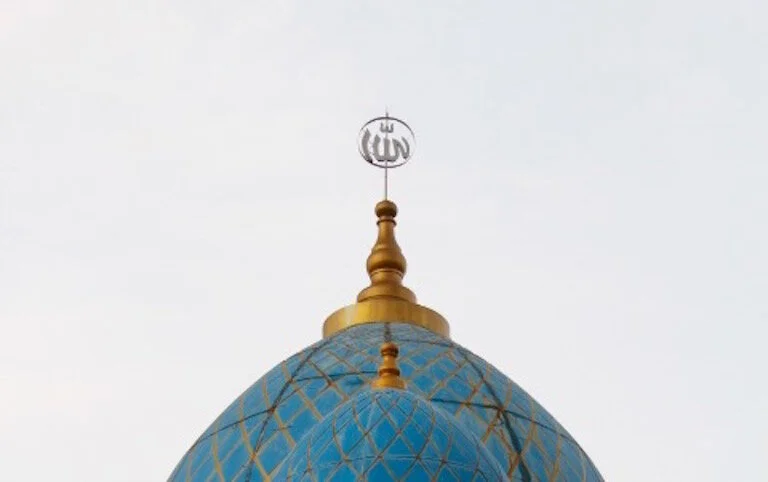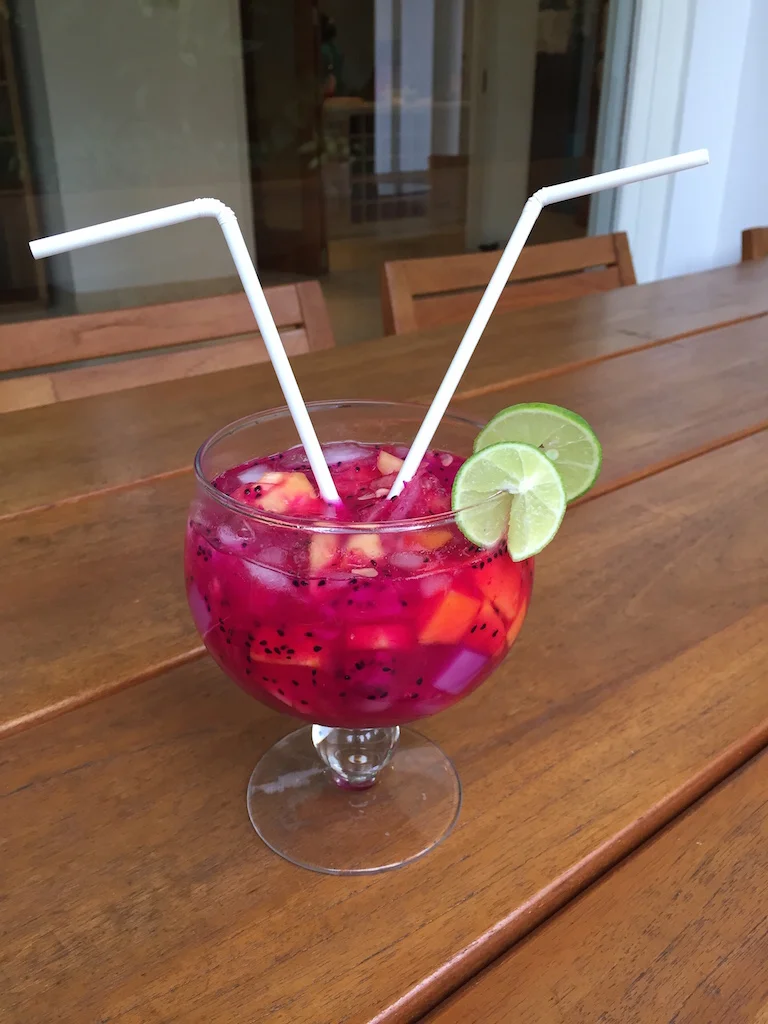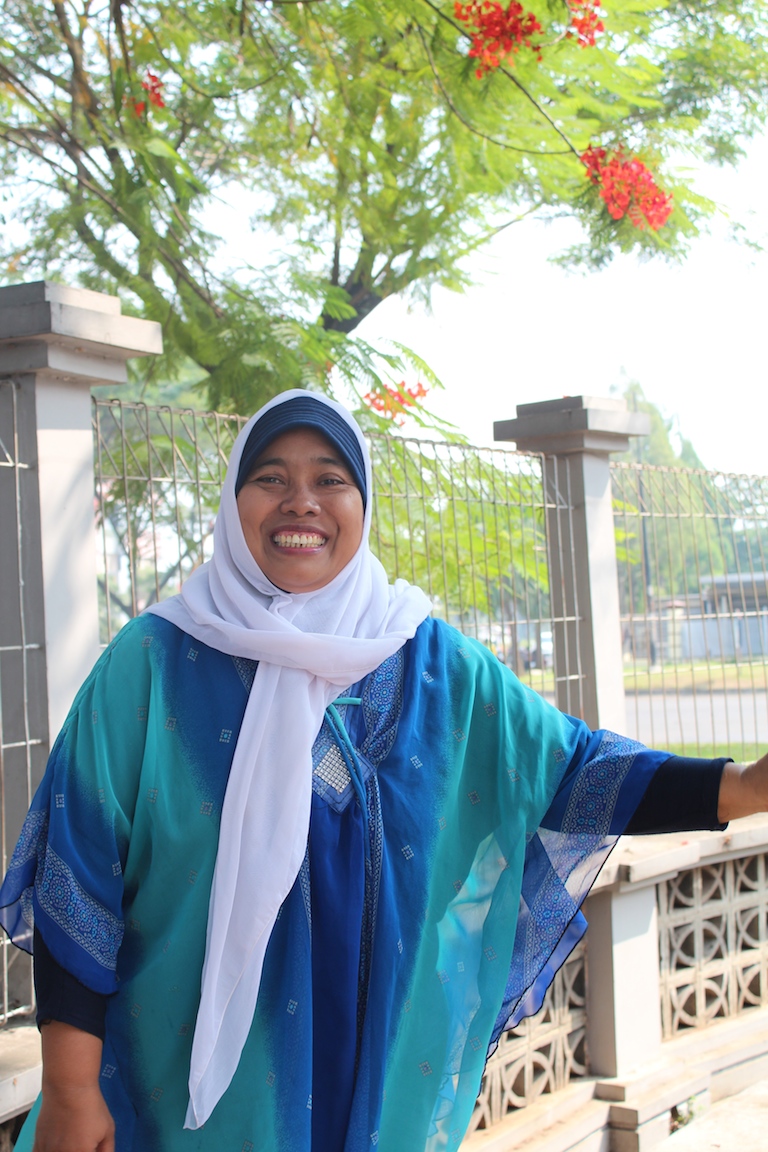Ramadan and Eid-ul Fitr in Jakarta
The adorned dome inside a mosque possesses significance; to create awe, to inspire, and symbolically in Islam represents the vault of heaven
During this month of June, the world’s Islamic population share in the Holy Month of Ramadan. This includes over 200,000,000 Indonesians across the archipelago, making Indonesia the world’s most populous Islamic Nation.
Ramadan is the ninth month of the Muslim calendar. It marks a period of fasting where Muslims abstain from eating and drinking during the hours between sunrise and sunset (thereabouts). Prayerfulness becomes increasingly heightened as people strive to become more inwardly reflective. Likewise, becoming more conscious of ones' own behaviour towards others takes on even greater priority.
The dates for Ramadan vary from year to year, as the Muslim calendar is based on a lunar cycle of 29 or 30 days. The exact date is determined by the sighting of the new moon. For 2016, Ramadan commenced on Monday 6th June and will finish on Tuesday 5th July, as marked by the auspicious day, ‘Hari Raya Puasa’ (or the 'Festival of Eid').
In today’s ajb post we chat to Ibu Tuti and Ibu Ani, two local Muslim ladies who generously share with us their preparations in the lead up to Ramadan and Eid-ul Fitr (or Lebaran as it is more commonly known in Indonesia).
*Kenalkan: Ibu Tuti
Ibu Tuti of Depok (a city in West Java province)
Ibu Tuti, please share with us what a typical day during Ramadan entails
Each day during the fasting hours we do not take any drink or food, so we become thirsty and hungry. Also, we must not do anything bad. For example, not become angry, or egotistical; not speak badly about others and not become emotional.
I wake up around 3.00am and prepare food for makan sahur (the meal eaten before fasting commences). It might be something like ikan (fish) or ayam (chicken) always served with vegetables or rice.
After makan sahur we pray. This prayer is called subuh and is something we do every day even when it is not Ramadan. We then either prepare to go to work, or if it isn’t a work day, we might go for a walk. Either way, after this there is no drinking or eating until around 6pm.
After 6pm, we have food and drink. This is called buka puasa (which translates as opening of the fast). We normally break our fast with a cup of hot sweet tea (teh manis) and colak (made with green beans, sweet potato, banana and sugar in coconut milk - either with ice or served warm). Then at 7pm we go to the mosque for Taraweh (special prayers together for Ramadan). Once we return, we eat dinner. Around 10pm we go to bed because we are full and we have to get up very early again as we need to eat and pray before the day begins.
A traditional method of announcing the faithful to prayer in Indonesia is by sounding a wooden cow skin covered drum, called a bedug
Does every Muslim take part in Ramadan (are there any exceptions)?
Yes, every person takes part, but if you are sick, you can be exempt. Children who are a little bit older (maybe 5 years or older), will do fasting but younger children might try for a few hours to experience it.
Pregnant women can fast but a woman having her period does not tend to fast and instead can change her fasting to other days in a different month.
Has the celebrating of Ramadan changed since you were a child?
Since I was a child I have always carried out the duties of Ramadan including fasting and then joined in the celebrating of Lebaran. I grew up in Surabaya, East Java. This is where most of my family lives.
Three (3) words to describe Ramadan:
Buka Puasa (also known in Arabic as Iftar): The meal taken at sunset that breaks the daily fast during Ramadan
Sahur: The meal that is consumed early in the morning before fasting commences
Taraweh: Extra prayers at night during the Islamic month of Ramadan
What is Idul Fitr?
Idul Fitri is more commonly known as Lebaran in Indonesia. It is the celebration that occurs after the fasting month of Ramadan.
(The Lebaran holiday officially lasts for two days in the Indonesian calendar although the government usually declares a few days before and after Lebaran as a bank holiday. Many Muslims take paid time off from their work place during this time).
What do you do to prepare for Lebaran?
I prepare to welcome Lebaran by making different things such as cakes and small foods for our family. We also organise our transport back home to our villages.
Around 2 weeks into Ramadan we start to prepare all the things we need for Lebaran like making nastar (pineapple cakes) and buying some food and drink for celebration (like sirup, Coca Cola, Fanta, tins of biscuits).
Who do you celebrate Lebaran with?
We celebrate with all of our family.
Do you travel for Lebaran?
Yes, most Indonesians do return home. This is called pulang kampung (and translates as 'returning to the family village'). First we visit my family in Surabaya (East Java) and then we travel to Yogyakarta in Central Java to see my husband's family. Usually we go by bus (train tickets are sold out early) and sometimes we rent a car with other friends. Transport is very busy and crowded during Lebaran. To get to Surabaya from Jakarta it takes two nights because the traffic is very congested. As soon as we have finished Sahur we depart for our journey.
What are some of the foods and drinks that you share during Lebaran?
Beef Rendang is often shared during Lebaran and is considered a special dish. Opor (a coconut chicken curry especially from Central Java) is a delicacy during Lebaran. Ketupat (a type of dumpling wrapped in young coconut palm leaves and made from cooked rice) often accompanies Opor. For sweets, an assortment of cakes is on offer.
To drink, we enjoy cocopan sirup (made from coconut syrup and pandan juice), Es buah (an iced fruit drink) and coctail (like iced fruit salad).
Ibu Tuti with the ingredients for coctail (including mango, nata de coco, pineapple, red dragon fruit, yellow watermelon, as well as fruit punch syrup and coconut milk, which is an optional ingredient). This is all mixed together along with ice and served as a refreshing drink/sweet treat
Coctail - enak sekali! (delicious!)
Do you exchange gifts during Lebaran?
Yes, we share food and exchange presents with family and closest friends; also neighbours.
Three words to describe Lebaran:
Sholat Idul Fitri: Praying together at the end of Ramadan (special gathering before the celebrations begin)
Silaturahmi: Friendships, good relationships (gathering together)
Saling Memaafkan: Mutual forgiveness
Do you have a special dish/recipe that you prepare for Lebaran?
My special dishes that I prepare for Lebaran include opor, rendang and ketupat.
Jo and Ibu Tuti
Do you have special clothing that you wear for Lebaran?
If possible, women like to wear a new traditional Muslim dress and hijab (busana muslim) for Lebaran. This can either be bought or made. However, if there isn’t the money to buy a new outfit each year, then looking nice and clean is most important.
*Kenalkan: Ibu Ani
Ibu Ani from Bintaro
For Ibu Ani of Bintaro, one of her preparations for Lebaran (National holiday) is making Nastar cookies.
Natstar cookies are traditional shortbread bite-sized cookies with pineapple jam inside, considered a favourite treat during The Eid / Lebaran holiday.Ibu Ani shares her Nastar recipe with us and her reflections on this significant time of the year for herself and her family. Ibu Ani is married to Pak Faiz Aziz and has a son Fauzan Aziz who is 8 years old.
Where did you learn to make Nastar cookies?
The recipe for Nastar cookies came first from my mother. My mother had a small home catering business in Jakarta, and I learned from her. I also learned from my parent's in-law. I make other cookies before Ramadan as well, such as Kastengel and Sago Keju and these recipes come from a variety of sources. The original recipe for Nastar cookies is Dutch, but the recipe I use has been modified.
How many years have you been making and selling Nastar cookies?
Over 7 years
Can you tell us more about the tradition of eating and sharing Nastar cookies at Eid /Lebaran?
In big cities like Jakarta eating and sharing Nastar cookies has become a tradition in every home that we go to at Lebaran. Not everyone in the city has time for making cookies and cakes because they are busy with work and family. So I am happy to make cookies for people who can not make their own. One month before the beginning of Ramadan I start to take orders for Nastar and other cookies. I prepare the orders and deliver them one week before Lebaran. The oven makes the house very hot and it is very tiring.
Can you share with us what your family rituals are for the Eid / Lebaran holiday?
At Eid everyone visits relatives, neighbours and friends to extend friendship. Hosts usually provide meals for the guests they are entertaining. On the first day of Lebaran there is communal Eid prayer, then to each person we ask forgiveness for mistakes. Mistakes that we've ever done either intentionally or unintentionally. We say'Mohon, maaf lair dan batin' which means 'forgive me from the bottom of my heart/soul for my wrongdoings in the past year' then we eat cookies and cakes.
The sunlight hitting the stained glass window in a suburban mosque in Jakarta
Do you have other food traditions you follow after the fasting month and the beginning of the Eid / Lebaran holiday?
At Lebaran usually every home has a habit of providing a 'great meal' which includes Ketupat (rice cake wrapped in coconut leaves), Opor Ayam (chicken curry), Sambal Goreng Kering Kentang (fried potatoes with sambal), Rendang, and Krupuk (deep fried crackers) The 'small meal' is in the form of cookies like Nastar, savoury cookies with Dutch influences such as Kastengel and Sago Keju, Kacang bawang and others depending on the tastes of the host.
How many cookies do you make before Lebaran?
The number of cookies I make before Lebaran depends on the number of orders I receive. Last year I made 125 cookie jars and 50 kilograms of mini pastels.
How can our local readers contact you to order your cookies?
They can SMS / WA on +62 0812 9178 5459 Or Bb pin 57B64578 We had the privilege of tasting first hand Ibu Ani's baking this month. Ibu Ani's Nastar cookies melted in our mouths, and the kids loved the watermelon shaped cookies. We enjoyed Ibu Ani's mini pastels dipped in chili sauce. We highly recommend them all!
Ibu Ani and Liz
Ibu Ani’s Nastar Cookies
Pineapple jam Ingredients:
4 Palembang pineapples, grated or blended with remaining ingredients below
200 grams sugar
1 teaspoon salt
1 piece cinnamon
Method:
Cut the pineapple and mash gently. Place in a saucepan. Add sugar, salt and cinnamon to the mixture.
Cook over low heat until the mixture has caramelised.
Leave to cool.
Cookie Ingredients:
250 grams margarine
250 grams butter
100 grams refined sugar
4 egg yolks
700 grams flour
4 tablespoons of full cream milk powder
Egg wash Ingredients:
3 egg yolks, beaten with 1 teaspoon of milk
Method:
Lightly beat the butter, sugar and eggs until creamy.
Add the flour and milk powder, stir gently until well blended.
Take a little dough, make a rounded shape, and fill the contents with pineapple jam.
Spread the cookies out on a tray, one cookie distance apart from one another.
Bake in oven at 140'c oven for about 30 minutes.
Remove from oven, brush with milk wash, place in the oven until the cookies are shiny and golden.
Allow to cool. Arrange in a jar, cover tightly.
Ibu Ani's Nastar cookies, filled with the traditional pineapple filling for festive occasions
(Clockwise) Ibu Ani's Nastar (pineapple filled), Kastengel (cheese stick) and Nastar (pineapple filled and topped with cheese)
*Kenalkan: Let me introduce
*Kue: Cakes and Cookies
This post was first published on June 15th 2015
Words: Jo Stevens and Liz McClean Photography: a journey bespoke















